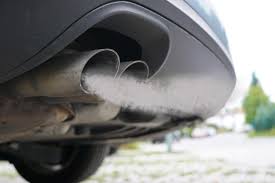2ZZGE 230PS NA Tune
A Compacted NA Power Package!👈
A 2ZZ-GE Motor
Up To 230HP NA Usable Power! 4A-GE Successor!
If Done Right, Emissioned Free For Most States!
If You Dont Care For Emissions, Build Over The 230+PS Mark, With Blot Built Mods!
Cheaper/Easier To Make Power Against Rivals!
Compact!
Economical!
Lightweight!
MWR Versions Are Reliable!
Suitable For Lightweight Vehicles!👈
Most Powerful NA Potential i4 Motor Up To Date! 2006
The Sound Is Amazing!
Achieving 230 horsepower from a naturally aspirated 2ZZ-GE engine while remaining road legal is a challenging but feasible goal with the right combination of performance parts, tuning, and legal compliance. The 2ZZ-GE, known for its high-revving character and strong factory output of around 180 hp, offers solid potential for naturally aspirated tuning. However, pushing the engine to the 230 hp mark requires a comprehensive build strategy focused on improving airflow, increasing compression, and optimizing combustion efficiency—all while ensuring emissions compliance and noise control.
A 2ZZ-GE Cylinder Head
The foundation of a 230 hp build begins with improving the engine’s breathing capabilities. A high-quality cold air intake and a performance exhaust manifold (header) will enhance airflow into and out of the engine. Choosing a CARB-certified or emissions-legal header, such as those made by PPE Engineering, ensures that modifications remain road legal in strict states like California. A high-flow catalytic converter and a cat-back exhaust system should also be installed, carefully selected to meet local decibel limits. These bolt-on components lay the groundwork for better power delivery without violating emissions standards.
A 2ZZ-GE Long Block
Next, internal engine upgrades are crucial to reaching the target power. High-compression forged pistons (around 12.5:1), lightweight rods, and performance camshafts will increase volumetric efficiency and improve the engine’s ability to generate power at high RPMs. Upgrading valve springs and retainers allows for safely raising the rev limit to around 9,000 RPM, taking full advantage of the engine’s high-revving nature. It’s also beneficial to port and polish the cylinder head to improve airflow. Despite these aggressive modifications, the engine can remain emissions-compliant if the catalytic converter is retained and tuning is done responsibly.
Tuning is the key to tying all the modifications together while ensuring legality. A standalone ECU or a programmable piggyback system should be used to tune the fuel and ignition maps for the new hardware. In states or countries with OBD or emissions testing, it’s vital to choose an ECU solution that maintains OBD-II functionality or can switch between performance and emissions-compliant maps. With expert tuning, the engine can pass emissions tests during inspections while still producing peak power on demand. The tuner should also ensure that the air-fuel ratio and ignition timing are optimized for both performance and safety.
In conclusion, reaching 230 hp from an NA 2ZZ-GE legally requires careful planning, quality components, and a commitment to compliance. By combining emissions-legal bolt-ons, upgraded internals, precision tuning, and a retained catalytic converter, enthusiasts can build a powerful yet street-legal engine. Although the costs and complexity increase as the power target climbs, the result is a responsive, high-revving machine that delivers exceptional naturally aspirated performance without running afoul of the law.
Every motor and transmission has a weakness. It is very important to address your motor and transmission for weaknesses before modifying them.
Check with your local laws and regulations before modifying, swiping motors, and transmission..👈
Important Information Before Swapping A Motor And Transmission..👈
The Importance Of Transmission Builds..👈
How To Build A Forged Engine..👈






Comments
Post a Comment